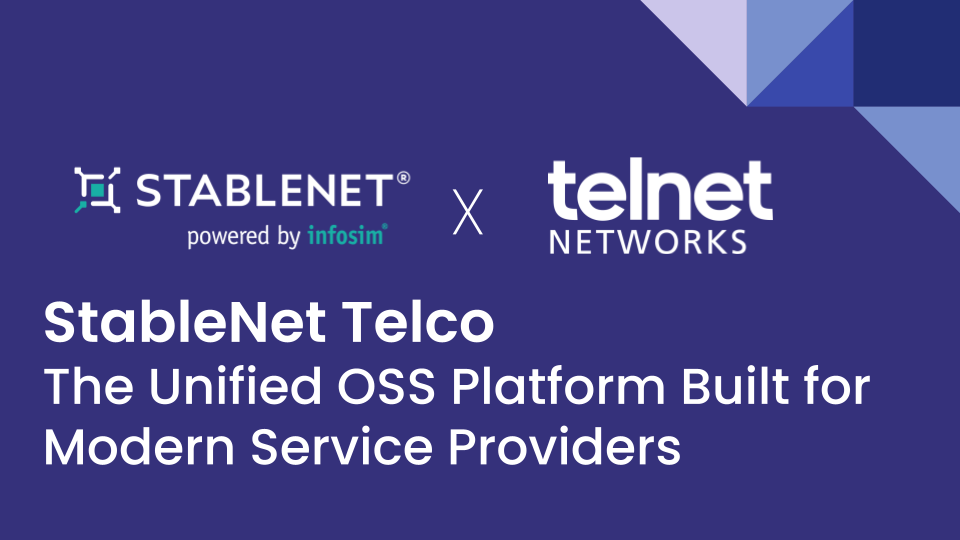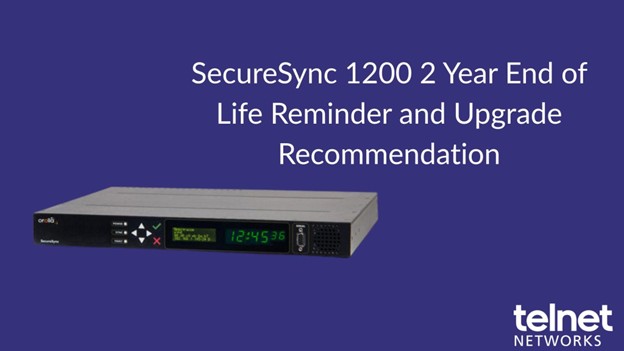Software Defined Networking (SDN) and Network Functions Virtualization (NFV) are two terms that have garnered a great deal of attention in the Telco market over the last couple of years. However, before actually adopting SDN/NFV, several challenges have to be mastered. This article discusses those challenges and explains why StableNet® is the right solution to address them.
SDN and NFV are both very promising approaches. The main objectives are to increase the flexibility of the control and to reduce costs by moving from expensive special purpose hardware to common off-the-shelf devices. SDN enables the separation of the control plane and data plane, which results in better control plane programmability, flexibility, and much cheaper costs in the data plane. NFV is similar but differs in detail. This concept aims at removing network functions from inside the network and putting them into typically central places, such as datacenters.
Six things to think about before implementing SDN/NFV
The benefits of SDN and NFV seem evident. Both promise to increase flexibility and reduce cost. The idea of common standards seems to further ease the configuration and handling of an SDN or NFV infrastructure. However, our experience shows that with the decision to “go SDN or NFV” a lot of new challenges arise. Six of the major ones – far from a complete list – are addressed in the following:
1. Bootstrapping/”Underlay”- configuration:
How to get the SDN/NFV infrastructure setup before any SDN/NFV protocols can actually be used?
2. Smooth migration:
How to smoothly migrate from an existing environment while continuously assuring the management of the entire system consisting of SDN/NFV and legacy elements?
3. Configuration transparency and visualization:
How to assure that configurations via an abstracted northbound API are actually realized on the southbound API in the proper and desired way?
4. SLA monitoring and compliance:
How to guarantee that the improved applicationawareness expected from SDN and NFV really brings the expected benefits? How to objectively monitor the combined SDN/NFV and legacy network, its flows, services and corresponding KPIs? How to show that the expected benefits have been realized and quantify that to justify the SDN/NFV migration expenses?
5. Competing standards and proprietary solutions:
How to orchestrate different standardized northbound APIs as well as vendor-specific flavors of SDN and NFV?
6. Localization of failures:
How to locate failures and their root cause in a centralized infrastructure without any distributed intelligence?
Almost certainly, some or even all of these challenges are relevant to any SDN/NFV use case. Solutions need to be found before adopting SDN/NFV.
- StableNet® SDN/NFV Portfolio – Get ready to go SDN/NFV StableNet® is a fully integrated 4 in 1 solution in a single product and data structure, which includes Configuration, Performance, and Fault Management, as well as Network and Service Discovery. By integrating SDN and NFV, StableNet® offers leverage the following benefits:
- Orchestration of large multi-vendor SDN/NFV and legacy environments- StableNet® is equipped with a powerful and highly automated discovery engine. Besides its own enhanced network CMDB, it offers inventory integration with third party CMDBs. Furthermore, StableNet® supports over 125 different standardized and vendor-specific interfaces and protocols. Altogether, this leads to an ultra-scalable unified inventory for legacy and SDN/NFV environments.
- KPI measurements and SLA assurance- The StableNet® Performance Module offers holistic service monitoring on both server and network levels. It thereby combines traditional monitoring approaches, such as NetFlow with new SDN and NFV monitoring approaches. A powerful script engine allows to configure sophisticated End-to-End monitoring scripts. The availability of cheap Plug & Play StableNet® Embedded Agents furthermore simplifies the distributed measurement of a service. Altogether, this gives the possibility to measure all the necessary KPIs of a service and to assure its SLA compliance.
- Increased availability and mitigation of failures in mixed environments- The StableNet® Fault and Impact Modules with the SDN extension combines a device-based automated root cause analysis with a service-based impact analysis to provide service assurance and fulfillment.
- Automated service provisioning, including SDN/NFV– StableNet® offers an ultra-scalable, automated change management system. An integration with SDN northbound interfaces adds the ability to configure SDN devices. Support of various standardized and vendorspecific virtualization solutions paves the way for NFV deployments. StableNet® also offers options to help keep track of changes done to the configuration or to check for policy violations and vulnerabilities.
StableNet® Service Workflow – Predestined for SDN/NFV The increasing IT complexity in today’s enterprises more and more demands for a holistic, aggregated view on the services in a network, including all involved entities, e.g. network components, servers and user devices.
The availability of this service view, including SDN/NFV components, facilitates different NMS tasks, such as SLA monitoring or NCCM.
The definition, rollout, monitoring, and analysis of services is an integral part of the Service Workflow offered by StableNet®. This workflow, see Figure 1, is also predestined to ease the management of SDN and NFV infrastructures.
Figure 1: StableNet® Service WorkFlow – predestined for SDN/NFV management

Trend towards “Virtualize Everything”
Besides SDN and NFV adoption trending upwards, there is also an emerging trend that stipulates “virtualize everything”. Virtualizing servers, software installations, network functions, and even the network management system itself leads to the largest economies of scale and maximum cost reductions.
StableNet® is fully ready to be deployed in virtualized environments or as a cloud service. An excerpt of the StableNet® Management Portfolio is shown in Figure 2.
Figure 2: StableNet® Management Portfolio – Excerpt

Thanks to InterComms for the article.






